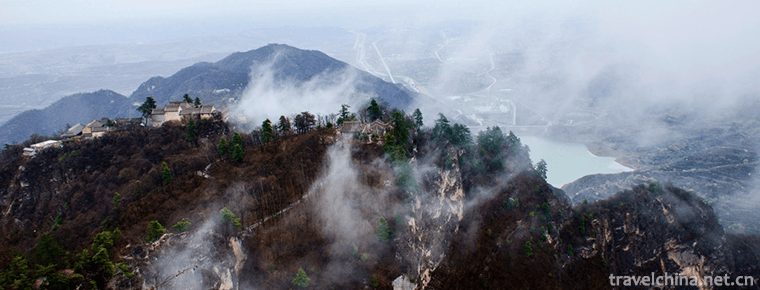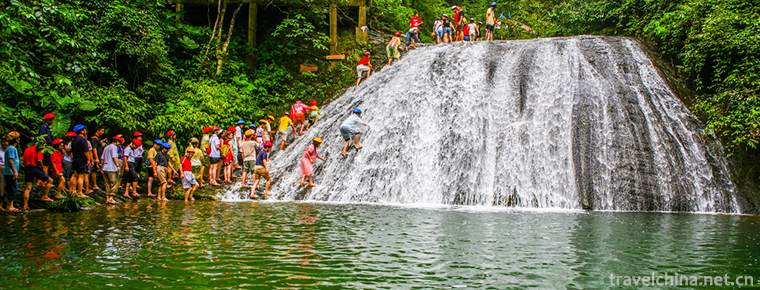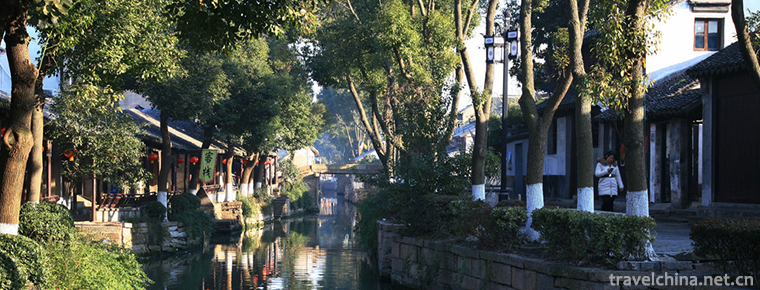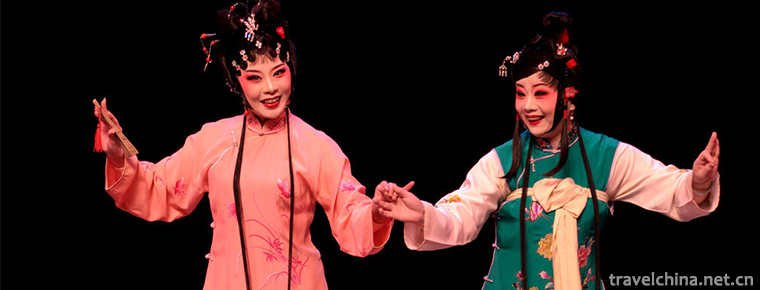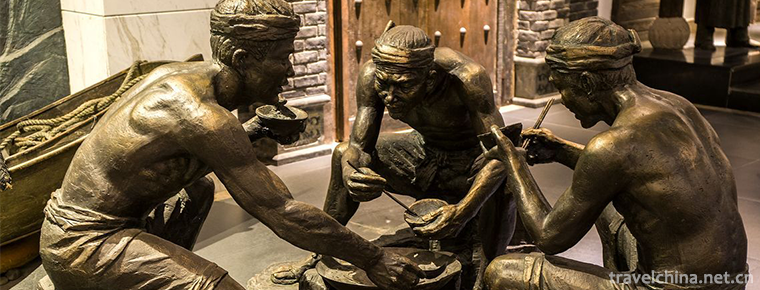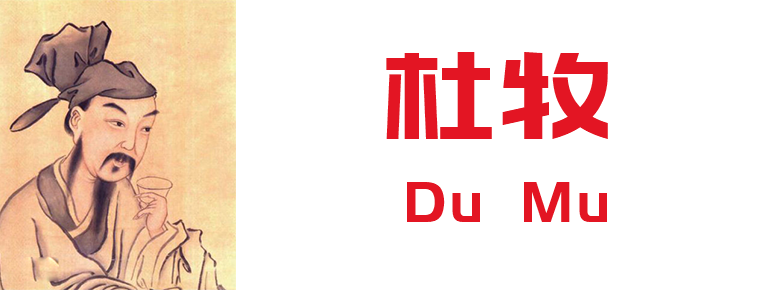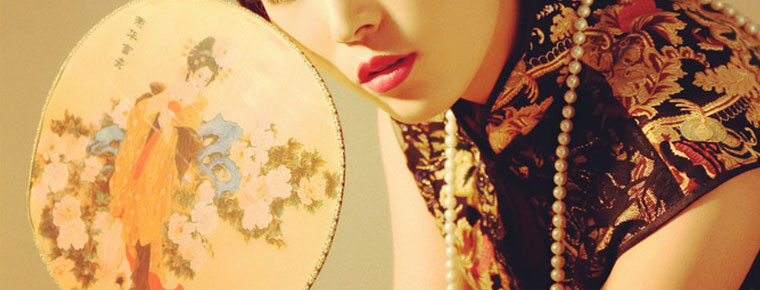Liuqin drama
Liuqin drama
Liuqin Opera, a local traditional drama in Zaozhuang City, Shandong Province, is one of the national intangible cultural heritage.
Liuqin Opera, also known as Liuqin Shu, was produced in Linyi and Zaozhuang of Shandong Province in the late Qing Dynasty. It was officially named Liuqin Opera in 1953. Liuqin Opera was formed in the middle of Qing Dynasty, mainly distributed in the border areas of Shandong, Jiangsu, Anhui and Henan provinces. The origin of Liuqin Opera is based on the folk minor "Lahunqiang" in southern Shandong Province, which is influenced by the local Liuzi Opera. Liuqin opera has a smooth and lively tune, a lively rhythm, and a variety of flower tunes, which is called "pull soul tune".
On May 20, 2006, Liuqin Opera was approved by the State Council of the People's Republic of China and listed in the first batch of national intangible cultural heritage list, the heritage number: IV-63.
historical origin
The formation of Liuqin Opera should be from Daoguang to Xianfeng in the Qing Dynasty, that is, around 1820 to 1860, about 200 years ago. The origin and origin of its artistic form are mainly described in four ways:
One is Haizhou in northern Jiangsu. It is said that in the late Ming and early Qing Dynasty, two kinds of tunes were popular among the people in Haizhou and other places in northern Jiangsu. One was that in the harvest season, farmers created a tune called "Taiping Song" according to the popular Yangko and chant. The other is a kind of tune called "Orion Tune" formed by local hunters after hunting, according to local popular folk songs and chants, combined with the local landscape and natural sound. Later, three local folk music enthusiasts Qiu Lao, Ge Lao and Zhang Lao mingled "Taiping Song" and "Orion Tune" together and constantly polished them. Then they compiled local folklore into stories that were easy to sing and performed, thus forming a "soul-pulling tune".
Second, the Wu brothers in Tengxian County, Shandong Province said. "Legend has it that more than a hundred years ago, outside the east gate of Tengxian County, Shandong Province, there was a brother named Wu, who was good at the local Gong and drum Gong song. Later, they disliked the monotony of Gong and drum song, so they changed to sing the"happy tune"as they wanted. Because Wu Da and Wu Eryuan were born singing'Aunt Zhou', the masses call them Aunt Zhou and Aunt Wu Er Zhou. Afterwards, in order to respect the master and avoid calling them names, the disciples of Wu Da and Wu Er changed the name of Zhou Guzi to'Lahuqiang'(that is, Lahuqiang).
Third, Linyi theory of Shandong. According to Volume IV of the Records of Yizhou Prefecture compiled by Qianlong in the Qing Dynasty in the twenty-fifth year, "Yiben Shuixiang, Tianbimu Rihu outside the village". Nine calamities at the age of ten have their origins. And traveling food in all directions, immersed into the common customs. At the beginning, I was still hungry and cold, but I used to be a story for a long time. I took my shoulders with me and invited my couples to come out together. It's not surprising that I fled from the famine everyday. The people of Tan in Gulan are almost identical with the people of Fengyang, so it is advisable to prohibit them in order to rectify the decadent trend. According to this record, together with the recollections of some old artists and the reasons why Liuzi opera and elbow drum and flower drum were popular in Linyi history, many experts and scholars, such as Jiang Xingyu of Shanghai Art Research Institute, Li Zhaobi, Ji Genyuan of Shandong Art Research Institute, Zhang Tiemin, Zhao Congyue, Suguilin of Linyi Drama Creation Research Office, etc. Sheng believed that Liuqin Opera originated from Linyi, Shandong Province.
Fourth, Shandong Tengxian Dongguo Town Sulou Village Sujiaban said. This statement was put forward from the end of 1980s to the beginning of 1990s, much later than the above three statements, and there is no systematic argumentation article, but this statement has a great tendency to come to the fore, because it is based on a series of evidence chains and more objective and scientific logical reasoning. The earliest advocate of this statement was Mr. Lu Chuancheng of Zaozhuang Drama Research Office. He presided over the compilation of Zaozhuang Culture and Art Chronicle and found clues to the origin of Liuqin Opera in the process of excavating historical materials of culture and art. On the basis of a large number of persistent investigations and studies, he put forward the view that Liuqin Opera originated in Sulou Village, Dongguo Town, Tengxian County, Shandong Province.
From the late Qing Dynasty to the early Republic of China, with the establishment of a large number of Liuqin opera troupes and the increasingly perfect accompaniment means of Liuqin opera, the art of Liuqin opera has entered its mature period and began to land in the city, gradually moving towards prosperity.
From the Tongzhi period of the Qing Dynasty to the 1920s and 1930s, there were more than 100 Liuqin opera troupes with names in Tengxian and Fuxian counties of Shandong Province alone. As for those wandering troupes composed of one family or two or three people, there were almost three or five in each village. At that time, in the vast countryside of Tengxian and Fuxian, the melody of "pulling soul tune" was floating everywhere, bringing endless pleasure to the broad masses of farmers.
During the period from Xianfeng to Guangxu in the late Qing Dynasty, Liuqin Opera was brought to all parts of the distribute area by travelling and eating artists, and its distribute area was expanded. In the 1920s and 1930s, because of the different customs and dialects, Liuqin Opera gradually formed different regional characteristics.
Liuqin opera, formerly known as pulling soul cavity, pulling back cavity, pulling Hu cavity and so on. In 1953, on the eve of the establishment of the Liuqin Opera Troupe in Xuzhou, the leaders and experts jointly studied and decided to rename it Liuqin Opera according to its willow-leaf accompaniment instrument. In 1954, during the first East China Opera Concert held in Shanghai, experts and scholars unanimously recognized the name and formally named it Liuqin Opera.
Distribution area
The main distributors of Liuqin Opera are Huang-Huai-Hai area bordering Jiangsu, Shandong, Shandong, Zaozhuang and Linyi, Xuzhou, Suqian and Huaian in Jiangsu, Bengbu, Suzhou, Huaibei, Chuzhou in Anhui, and Yongcheng, Xiayi and Yucheng counties (cities) bordering Shangqiu in Henan, Shangqiu in Shandong and Anhui. It is customarily divided into five roads, namely, east, north, middle, South and west, and its area is roughly as follows:
East Road: Linyi, Cangshan, Tancheng, Haizhou, Xinyi and Huai'an in Shandong Province.
North Road: Jining, Tengxian, Zouxian, Weishan and Yixian in Shandong Province.
Middle Road: Xuzhou, Tongshan, Pixian, Suining, Sihong, Suqian and other places in Jiangsu Province.
South Road: Huaibei, Suxian, Lingbi, Sixian, Bengbu, Wuhe, Fengyang, Mingguang and Chuzhou in Anhui Province.
Representative repertoire
North Road: Blocking Horse, Fighting Gan, Changing Old and Young, Big Garden, Wang Dingbao's Loan, Binding Bedding Set, Guo Dajie's Hexagram, Wang Erjie's Sifu, etc.
Middle Road: Tongtai Club, Wang Huadeng, Dashangshou, etc.
South Road: Sanlihan Bridge, Embroidered Shoes, Pipa, Four Notices, etc.
West Road: Lotus Temple, East Huilong, West Huilong, Xue Rengui and Liu Yingchun, etc.
Inheritance and protection
Inheritance value
Opera art is one of the representatives of Chinese traditional culture. Liuqin Opera, as a wonderful flower in the hundred gardens of Chinese opera, has important historical value.
As one of the outstanding representatives of local operas, Liuqin Opera bears the brand of social development. Therefore, its value is not only reflected in the history of local operas, but also an important basis for the study of traditional Chinese folk culture. Judging from the development of Liuqin Opera's aria, it followed the imitation and deduction of Huagu tune at the earliest time. So far, it has formed a unique aria body. It can be said that the study of the evolution of this aria is of great benefit to the study of national music culture.
The performance of Liuqin Opera has a rough, warm, simple and healthy style and a strong flavor of life. Especially in life drama, this feature is particularly prominent. Liuqin opera has a melodious and touching singing voice, and contains many ancient sounds and rhymes, which has a high aesthetic value.
Inheriting characters
Wang Chuanling, the representative successor of the third batch of national intangible cultural heritage projects, declared in Zaozhuang City, Shandong Province. Declaration items: Liuqin Opera.
Zhang Jinlan, the representative successor of the third batch of national intangible cultural heritage projects, declared in Linyi City, Shandong Province. Declaration items: Liuqin Opera.
protective measures
On December 18, 1976, the Cultural Department of Linyi Administration held a literary and artistic class, offering Liuqin specialty. In August 1980, Linyi Art School was formally established with the approval of Shandong Provincial People's Government and on the basis of this class.
In July 1982, the Cultural Museum of Taierzhuang District of Zaozhuang City held a training course for students of Liuqin Opera. A total of 40 students were enrolled, including 30 actors and 10 bands. The students are mostly junior high school and senior high school graduates and some artists'children. The teachers are Li Jing-ai and Malan Xia. After the training course, most of the trainees were assigned to Liuqin Opera Troupe in Taierzhuang District.
In December 1985, with the approval of Tengxian People's Government, Tengxian Cultural Bureau began to prepare for the establishment of Tengxian Opera School. After more than three months of intensive work, the school officially opened in March 1986. The school has two majors: Liuqin Opera Performance and Instrumental Accompaniment. Besides the basic skills of opera, it also offers courses on culture, music and common sense of opera. After graduation, most of the students were assigned to Liuqin Opera Troupe in Tengzhou.
social influence
Honorary commendation
In 1954, the traditional operas of Liuqin Opera Troupe in Jiangsu Province, such as Drinking Noodles, Barring Horses and Yan Jianyou Palace, won the first and second prizes of script and actor in the "East China Opera Performance Conference".
In 1957, Zhuangyuan Dageng, adapted by Liuqin Opera Troupe of Jiangsu Province, won the first and second prizes for creation and actors in the first Jiangsu Opera Festival.
In 1979, the Liuqin Opera Troupe of Jiangsu Province created and performed the modern drama Xiaoyan and Dayan, which was performed in Jinjing on the 30th anniversary of the founding of the People's Republic of China and won the Second Prize of Creation and Performance by the Ministry of Culture.
In 2002, Liuqin and Sizhou Traditional Folk Opera "Walking Mother's Home" adapted by Liuqin Opera Troupe of Jiangsu Province participated in the "National Local Opera Fine Folk Opera Evaluation Competition and Young Opera Actors Competition" organized by the Ministry of Culture, and won the first prize for actors.
In 2003, the modern drama "Zaohua" created and performed by Liuqin Opera Troupe of Jiangsu Province won the "Excellent Drama Award" in the 4th Jiangsu Drama Festival, and was included in Jiangsu Province's top-quality stage art project repertoire from 2003 to 2004, and won the "Nomination Award".
In 2005, Wang Xiaohong, an outstanding young actor of the group, won the 22nd Chinese Drama "Plum Blossom Award" and achieved a breakthrough of zero "Plum Blossom Award" for Liuqin opera actors.
Important activities
In March 1979, the Ministry of Culture sent the Liuqin Opera "Xiaoyan and Dayan" crew to the front line of Guangxi to express their condolences to the troops who fought in self-defense against Vietnam, and they were warmly welcomed by the instructors.
In 1980, Jiangsu Film Studio made a color opera film of Liu Qin Opera Xiao Yan and Da Yan.
In 1982, Liuqin Opera Teleplay (exterior film) The Heartbreaker Receives His Son-in-law, produced by Jiangsu Television Station, was broadcasted nationwide on CCTV and was welcomed.

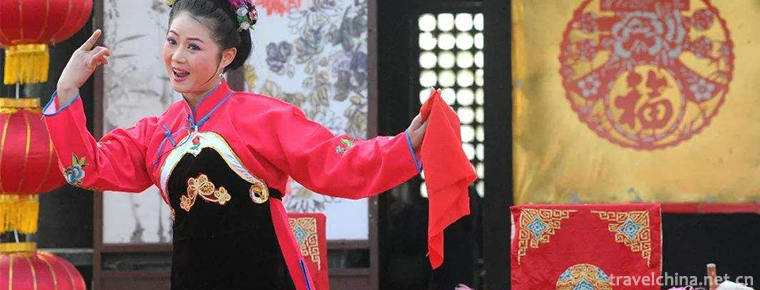
-
Kongtong Mountain Scenic Spot
Kongtongshan Scenic Area is located 12 kilometers west of Pingliang City, Gansu Province. It overlooks Xi'an in the east, Lanzhou in the west, Baoji in the South and Yinchuan in the north.
Views: 209 Time 2018-12-12 -
Gudong Waterfall
Gudong Forest Waterfall Group Tourist Area is located at the foot of Butterfly Mountain - Lawn Road, Gudong Village, Dayuan Town, 8 kilometers away from Guilin City, on the other side of Lijiang Forei.
Views: 217 Time 2019-01-12 -
Luzhi Ancient town
Yongzhi Ancient Town belongs to Wuzhong District of Suzhou City. It is located in the east of Suzhou City. It is 18 kilometers west of Suzhou City and 58 kilometers east of Shanghai..
Views: 100 Time 2019-02-06 -
Songhua Lake Scenic Area
Songhua Lake Scenic Spot is a famous tourist attraction in Jilin Province. It is a national AAAA level scenic spot (AAAAA is being declared). Located in the southern suburb of Fengman District.
Views: 106 Time 2019-02-13 -
Legend of Chen Sanwuniang
Li Jing Ji of Chen Sanwuniang is an ancient folklore, belonging to the legendary works of Ming Dynasty in China. The author has lost his life in Quanzhou (Chen Sang) of Fujian Province.
Views: 107 Time 2019-04-16 -
Copper Carving Skills
Hangzhou bronze sculpture is the continuation of ancient bronze manufacture. It developed greatly in Wuyue and Southern Song Dynasty. After Tongzhi in Qing Dynasty, Hangzhou bronze sculpture represent.
Views: 160 Time 2019-06-21 -
Beijing Foreign Studies University
Beijing Foreign Studies University is located in the West Third Ring Road north of Haidian District, Beijing. On the two sides of the three ring road, there are two East and West campuses, which are d.
Views: 148 Time 2019-09-06 -
Du Mu
Du Mu (803 years - 852 years), Zi Mu Zhi, Fan Chuan Chuan, Han, Jing Zhao Wan (now Shaanxi Xi'an). Du Mu is Tang dynasty Outstanding poets, An essayist The prime minister. Du you Sun, Du from Yu Son. .
Views: 257 Time 2019-09-07 -
Lingshan Temple
Lingshan temple is located in Mianning County, Liangshan Prefecture, Sichuan Province. It is 8 km away from Mianning County. It is the most famous temple in Liangshan Prefecture. It belongs to Mianning County as well as Xichang Satellite Launch Center..
Views: 173 Time 2020-10-16 -
Cheongsam and fan
As the saying goes, the pipa is half covered. What did ancient beauties use to cover their faces? The first reaction must be a fan! Fans are also the most common accessories in ancient times. Men use paper fans and women use round fans. Chinese traditional fan culture .
Views: 352 Time 2020-12-11 -
Characteristics and types of Chinese embroidery
The main artistic features of hand embroidery are neat patterns, beautiful silk, fresh and elegant colors, rich needlework, appropriate elegance and beauty, and exquisite and exquisite embroidery. As far as the needling methods of embroidery are concerned,.
Views: 231 Time 2020-12-12 -
Mineral resources in Dazhou
As of 2012, 38 kinds of minerals have been found in Dazhou City, with more than 250 producing areas. Among them, there are 28 proven reserves, 146 producing areas, 28 exploitable and 21 developed. The proven reserves of stone coal are 763 million.
Views: 134 Time 2020-12-20
